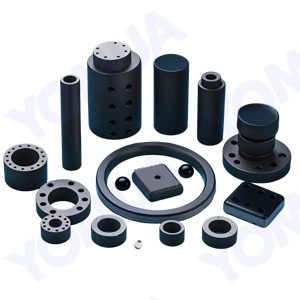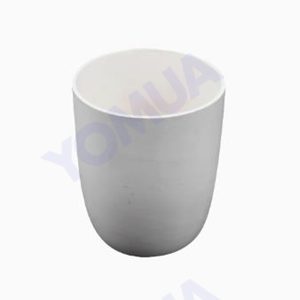Whether Silicon Nitride (Si3N4) ceramics can be replaced by Boron Nitride (BN) ceramics depends on the specific application and the properties required. Both materials have unique characteristics that make them suitable for different use cases. Below is a detailed comparison to help determine if BN ceramics can replace Si3N4 ceramics:

Comparison of Key Properties
| Property | Si3N4 Ceramics | BN Ceramics |
|---|---|---|
| Hardness | Very high hardness (excellent wear resistance). | Lower hardness (softer, more machinable). |
| Thermal Conductivity | Moderate to high thermal conductivity. | High thermal conductivity (comparable to metals). |
| Thermal Shock Resistance | Excellent thermal shock resistance. | Exceptional thermal shock resistance. |
| Oxidation Resistance | Good oxidation resistance at high temperatures. | Excellent oxidation resistance (up to 1000°C in air). |
| Chemical Resistance | Resistant to acids, alkalis, and molten metals. | Chemically inert, resistant to most chemicals. |
| Electrical Insulation | Good electrical insulator. | Excellent electrical insulator. |
| Machinability | Difficult to machine due to high hardness. | Easily machinable (similar to graphite). |
| Lubricity | Low lubricity. | High lubricity (self-lubricating properties). |
| Cost | Moderate to high cost. | Generally higher cost than Si₃N₄. |
Applications of Si3N4 and BN Ceramics
Si3N4 Ceramics
- Bearings and Rolling Elements: High hardness and wear resistance make Si3N4 ideal for bearings.
- Cutting Tools: Used in high-speed machining due to its toughness and thermal stability.
- Engine Components: Used in automotive and aerospace industries for parts like turbocharger rotors.
- Industrial Wear Parts: Suitable for applications requiring high wear resistance.
BN Ceramics
- High-Temperature Insulators: Used in crucibles, thermocouple tubes, and furnace components.
- Lubricants and Coatings: Self-lubricating properties make BN ideal for high-temperature lubricants.
- Electronics: Used as substrates and insulators in electronic devices due to its electrical insulation and thermal conductivity.
- Metal Casting: Used as release agents and coatings in metal casting.

Can BN Replace Si3N4?
- Yes, in Specific Applications:
- If the application requires high thermal conductivity, electrical insulation, or self-lubricating properties, BN ceramics can replace Si3N4. For example:
- BN is preferred in high-temperature insulators or electronic substrates.
- BN’s lubricity makes it suitable for applications where low friction is critical.
- If the application requires high thermal conductivity, electrical insulation, or self-lubricating properties, BN ceramics can replace Si3N4. For example:
Examples Where BN Can Replace Si₃N₄
Here are some specific examples where Boron Nitride (BN) ceramics can replace Silicon Nitride (Si₃N₄) ceramics, as well as cases where replacement is not feasible:
1. BN Replacing Si₃N₄ in High-Temperature Insulators
- Use Case: In a semiconductor manufacturing furnace, BN crucibles are used instead of Si₃N₄ because BN can withstand higher temperatures (up to 1000°C in air) and provides better thermal shock resistance.
- Reason: BN’s superior thermal stability and chemical inertness make it ideal for handling molten materials.
2. BN Replacing Si₃N₄ in Thermal Management
- Use Case: BN is used as a thermal spacer in high-power LED modules instead of Si₃N₄ because BN has higher thermal conductivity, ensuring efficient heat dissipation.
- Reason: BN’s thermal conductivity (comparable to metals) and electrical insulation properties make it perfect for electronics.
3. Si₃N₄ Retaining Use in Bearings
- Use Case: Si₃N₄ is used in high-speed bearings for wind turbines, where BN cannot be used due to its lower hardness and wear resistance.
- Reason: Si₃N₄’s hardness and toughness ensure long-term durability under high mechanical stress.
4. Si₃N₄ Retaining Use in Cutting Tools
- Use Case: Si₃N₄ cutting tools are used for machining hardened steel, while BN is unsuitable due to its lower hardness.
- Reason: Si₃N₄’s toughness and thermal stability allow it to withstand the high stresses and temperatures during machining.

| Application | Reason for Replacement | Sample Use Case |
|---|---|---|
| High-Temperature Insulators | BN has excellent thermal stability and electrical insulation. | BN crucibles for melting metals or semiconductors at high temperatures. |
| Thermal Management Components | BN has higher thermal conductivity than Si₃N₄. | BN heat sinks or thermal spacers in electronic devices. |
| Self-Lubricating Components | BN has inherent lubricity, reducing friction without external lubricants. | BN coatings for molds or dies in metal casting to prevent sticking. |
| Chemical Reactors | BN is chemically inert and resistant to corrosive environments. | BN liners or components in chemical reactors handling aggressive chemicals. |
| Electronics Substrates | BN provides excellent electrical insulation and thermal conductivity. | BN substrates for high-power electronic devices or RF windows. |
Examples Where BN Cannot Replace Si₃N₄
- No, in Other Applications:
- If the application requires high hardness, wear resistance, or structural strength, Si3N4 is irreplaceable. For example:
- Si3N4 is better suited for bearings, cutting tools, and engine components due to its superior mechanical properties.
- BN’s lower hardness makes it unsuitable for wear-resistant applications.
- If the application requires high hardness, wear resistance, or structural strength, Si3N4 is irreplaceable. For example:
| Application | Reason Si₃N₄ is Preferred | Sample Use Case |
|---|---|---|
| Bearings and Rolling Elements | Si₃N₄ has superior hardness and wear resistance. | Si₃N₄ bearings in high-speed machinery or automotive applications. |
| Cutting Tools | Si₃N₄’s toughness and thermal stability make it ideal for machining. | Si₃N₄ cutting tools for high-speed machining of hard materials. |
| Engine Components | Si₃N₄’s strength and thermal shock resistance are critical for engine parts. | Si₃N₄ turbocharger rotors in automotive engines. |
| Wear-Resistant Parts | Si₃N₄’s high hardness and durability make it suitable for wear applications. | Si₃N₄ seals or nozzles in abrasive environments. |
| Structural Components | Si₃N₄’s mechanical strength and fracture toughness are essential for structural uses. | Si₃N₄ components in aerospace or industrial machinery. |
Key Considerations for Replacement
- Operating Environment: BN excels in high-temperature and chemically aggressive environments, while Si3N4 is better for mechanical and wear-resistant applications.
- Cost: BN ceramics are generally more expensive than Si₃N₄, which may limit their use in cost-sensitive applications.
- Machinability: BN is easier to machine, making it preferable for complex shapes and custom components.
- Thermal Conductivity: BN’s higher thermal conductivity makes it ideal for thermal management applications.
Conclusion
BN ceramics can replace Si3N4 ceramics in specific applications where thermal conductivity, electrical insulation, lubricity, or chemical inertness are critical. However, for applications requiring high hardness, wear resistance, or structural strength, Si3N4 remains the superior choice. The decision to replace Si3N4 with BN should be based on the specific requirements of the application, including mechanical, thermal, and environmental factors.